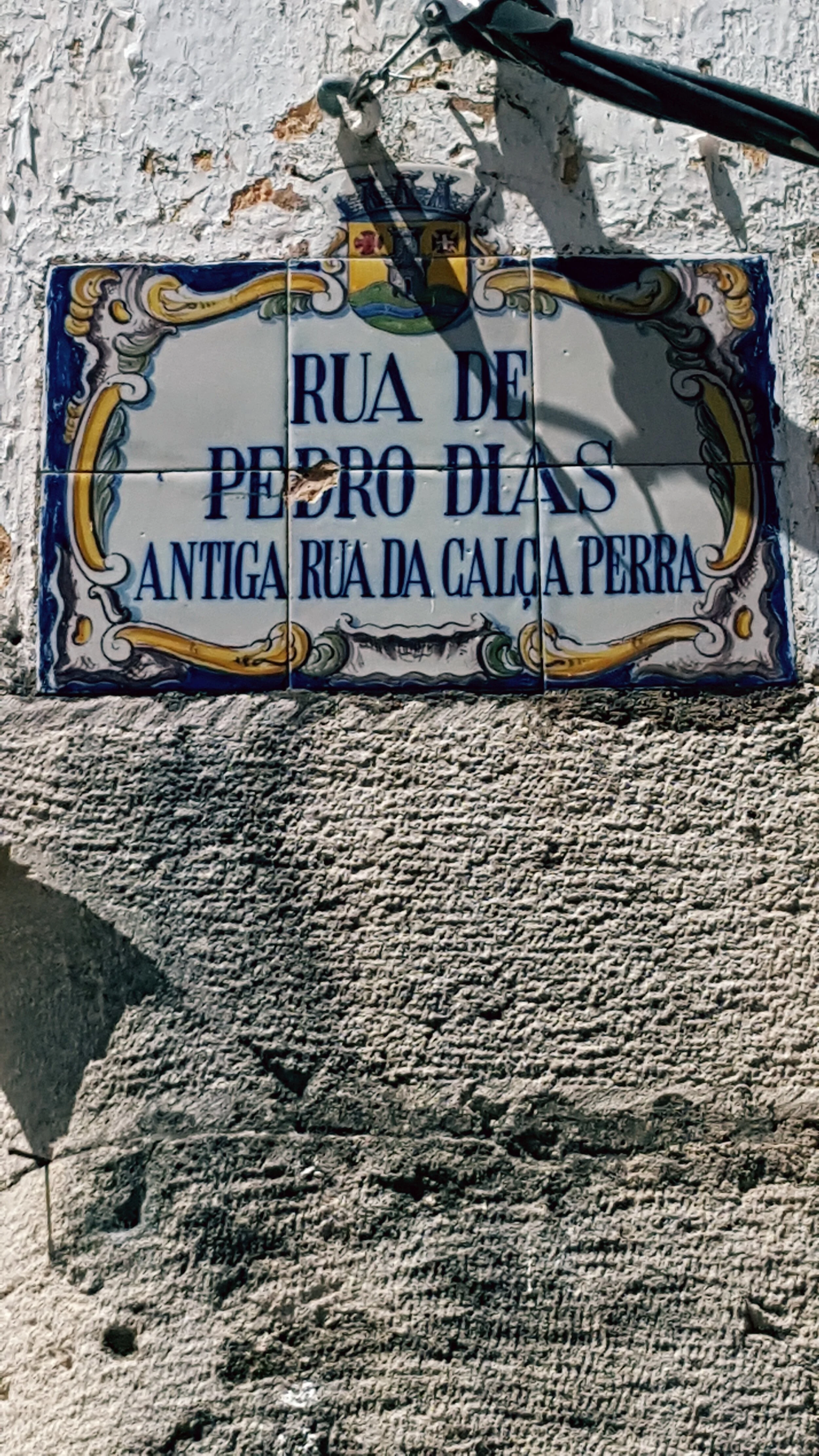Azulejos
Here I will share photos of the vast numbers of azulejos that can be found in the facade of buildings, from churches to city buildings, some depicting patterns, other depicting scenes of great events or simply allegoric ones or even a portrayal of Portuguese life of the past.
Historic origins
Azulejo is a tile which over it’s history has evolved to become a unique Portuguese artistic expression. It is commonly accepted that the tiles were part of the Arab heritage left by the Moors in the Andalus which is now Portugal and Spain. Seville, in southern Spain, was a centre for tile manufacturing before production made its way into Portugal. in the Palace of Sintra, the one with large cone shaped chimneys, have a large display of these old tiles which are easily recognisable with their geometric patterns.
The geometric pattern or Arabic tiles are reminiscent of the Alhambra palace (Spain) and the Maghreb- North Africa
Porto church
churches are filled with azulejo with religious themes both decorating the external and internal walls
Church facade with blue monochrome azulejo depicting religious themes used to communicate the message of catholicism to the people
Porto - Central station of São Bento
Portugal's most beautiful train station
I’d like to say that this is the most beautiful train station, as the there are many train stations in Portugal decorated with azulejo, but it’s the fact that the main hall if filled with diverse themes depicted in this train station that is so captivating. The azulejos tiles are separated in several distinct sections capturing and depicting the history and life in Portugal, from the rural peasants life to the battles fought by well known figures and Kings.
There are not only monochrom blue azulejos, but also coloured tiles toward the top of the wall, just below the roof. A additional row of geometric coloured tiles make the walls of the hall a complete representation of the main styles of azulejo used historically in the country.
Sao Bento train station
A close up of the sao bento station azulejo depicting aristocracy and historical events
Another close up of the sao bento station azulejo historical events and at the top, the coloured tiles are used to depict the rural life in Portugal
The Bussaco Palace
Bussaco palace stairs. The azulejo portrays a battle between the Portuguese and the Moors
Bussaco palace stairs close up view of the azulejo depicting epic battles by the Portuguese army
Bussaco palace azulejo depicts the seafaring voyages narrated as epic feats of the Portuguese people
Óbidos Medieval Town
Óbidos is medieval town surrounded by the castle wall on the top of a hill. The main entrance to the town is decorated with both azulejo and a painted ceiling making it the main decorated feature of the town along with the church.
Óbidos main entrance azulejos and painted ceiling
Queluz palace
Inside the palace, a number of Azulejo panels portray an exotic and completely different way of life with exotic birds and monkeys suggesting an inspiring wonderful if not paradisiac world that was part of the Portuguese colonies.
Queluz palace, Several depictions of exotic scenery from the Portuguese colonies, displaying birds, monkeys and other animals were painted using yellow and other colours to add to the exotic themes of these panels.
Outside of the Palace, a small canal was built, probably for the pleasure and leisure of those who lived there. the architecture of this canal was decorated with an impressively long display of azulejo along its walls.
The exterior walls of the canal build in the gardens of Queluz Palace decorated with traditional blue monochrome azulejo
Queluz Palace canal adorned with azulejo along the two walls
A closeup view of the azulejo adorning the canal

























